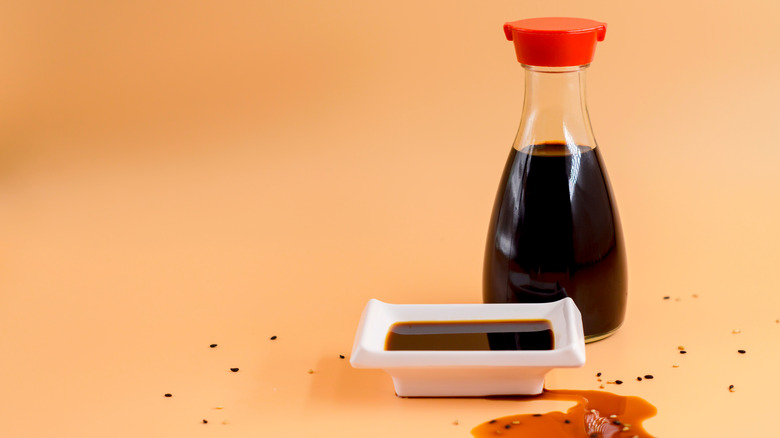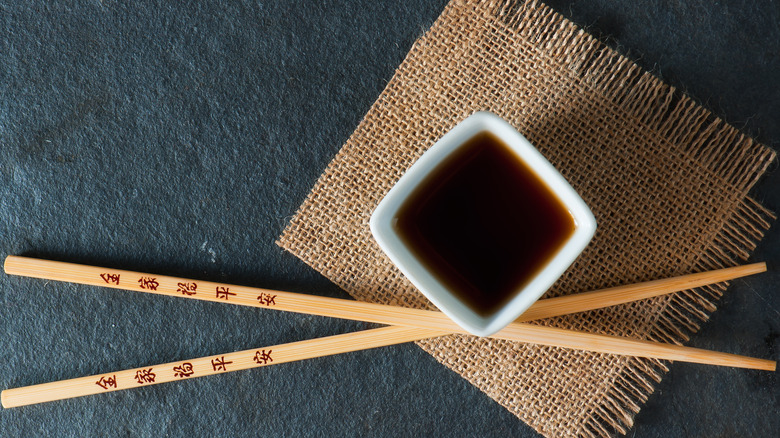The Real Difference Between Soy Sauce And Hoisin Sauce
Anytime you go out for Asian food, or get delivery, you'll almost always end up with plenty of condiments for adding some extra flavor to your stir-fry, sushi, or grilled meats and veggies. But before you start pouring them over your plate or using your chopsticks to dip a bite into the closest sauce, you'll want to know exactly what you're adding to your meal. If you're not already familiar with Asian food or don't order takeout often, it can be easy to mix up a few of those condiments, especially ones that look a little similar, like soy sauce and hoisin sauce.
Soy sauce is one of the most popular condiments out there; according to Healthline, it's been used in cooking for over 1,000 years and originated in China, though it's also commonly used in Japanese, Korean, and Southeast Asian cuisines. As you'd guess from the name, soy sauce is made from fermented soybeans, which produces a salty, sweet, and slightly bitter liquid condiment that's used in stir-fries, marinades, and even for braising meats.
According to Healthline, soy sauce is usually made with soybeans, salt, wheat, and something for the fermentation process, like yeast. There's no one-size-fits-all recipe, however. You can find hundreds of varieties of soy sauce out there, and each one can have a slightly different flavor, depending on the region it was made in and the ingredients used (via MalaFood).
What is hoisin sauce, and how is it different from soy sauce?
Hoisin sauce has a few similarities to soy sauce, but when it comes down to differentiating dipping sauces on the table, you're not likely to get the two mixed up. Like soy sauce, hoisin sauce is made with fermented soybeans, but it also usually has garlic, sesame oil, chiles, vinegar, and sweetener mixed in to give it a tangy, salty, slightly sweet flavor. Sometimes known as Chinese barbecue sauce, hoisin sauce is especially popular in Cantonese dishes, but is also sometimes used in Vietnamese cooking.
Your biggest clue that you're dipping a piece of grilled chicken in hoisin sauce instead of soy sauce will be the texture. According to Curious Cuisiniere, hoisin sauce is much thicker than soy sauce, and usually tastes sweeter. Hoisin sauce can be used as a glaze, in noodle recipes or a stir-fry, and it also works well as a dipping sauce for egg rolls or appetizers. You can even make your own homemade hoisin sauce — most recipes start with soy sauce, then add ingredients like garlic, honey, white vinegar, and Sriracha (via Bon Appétit). So while the two might have some similarities, each of these condiments will add a unique flavor and texture to your cooking or takeout.

